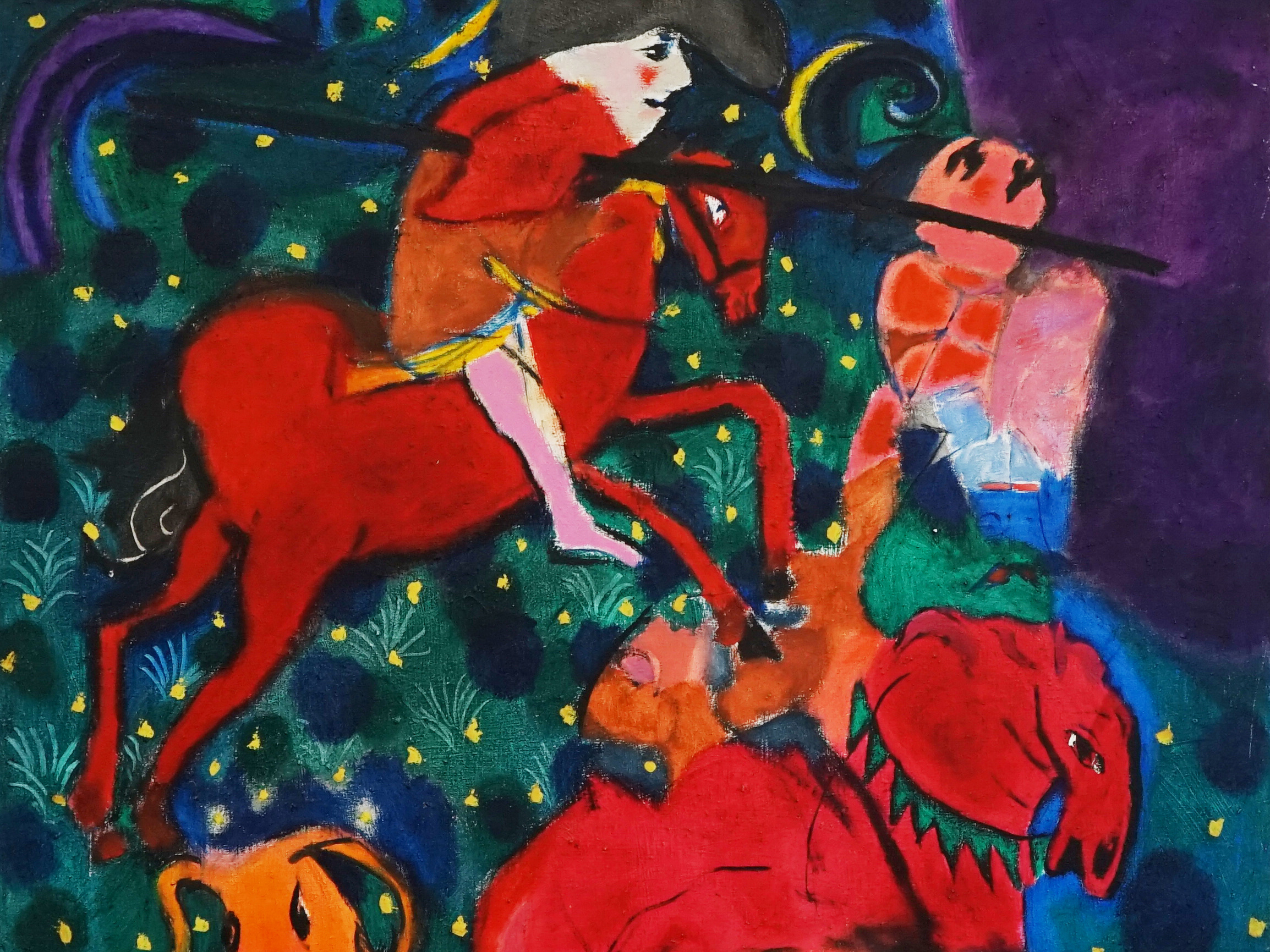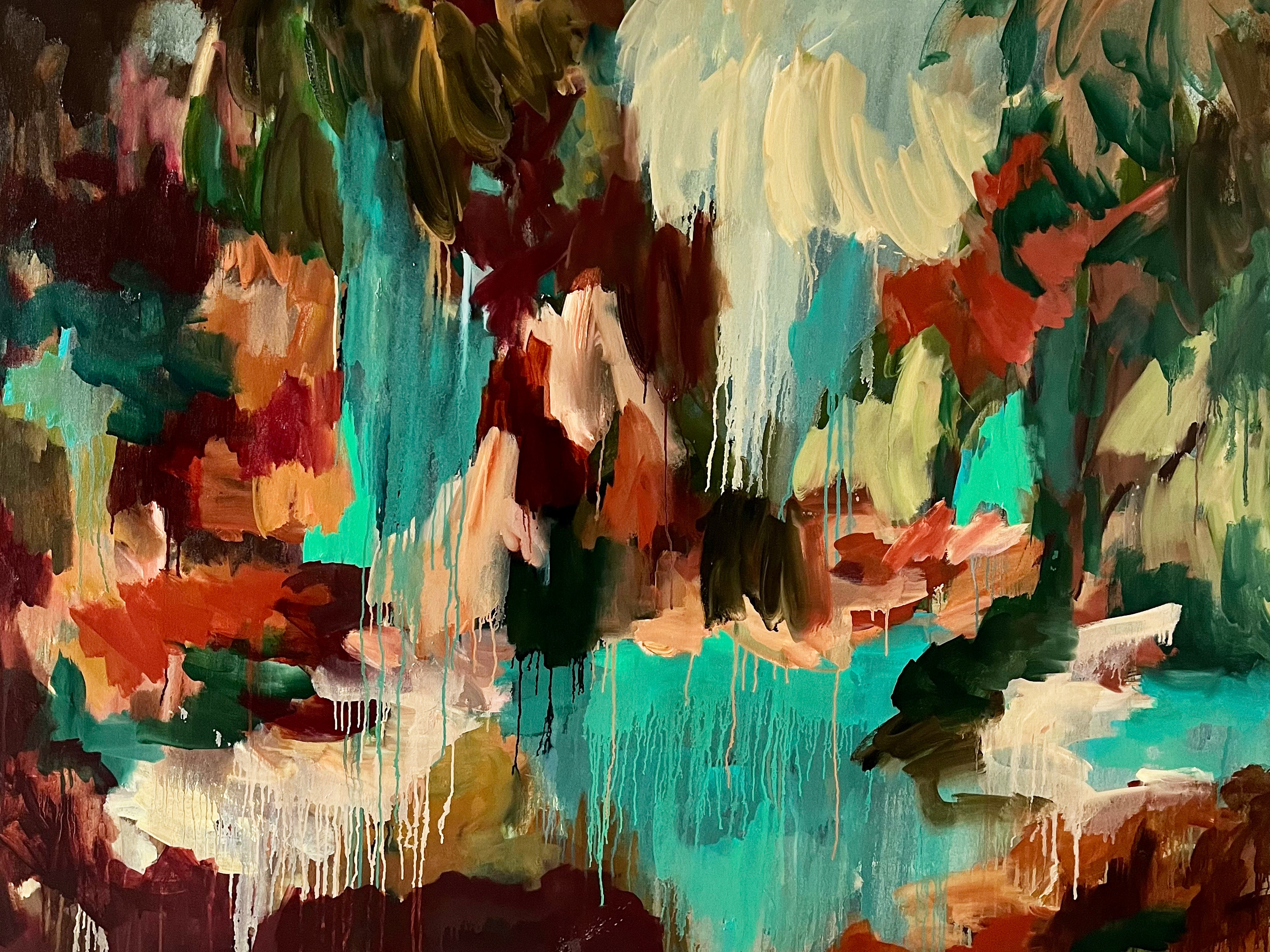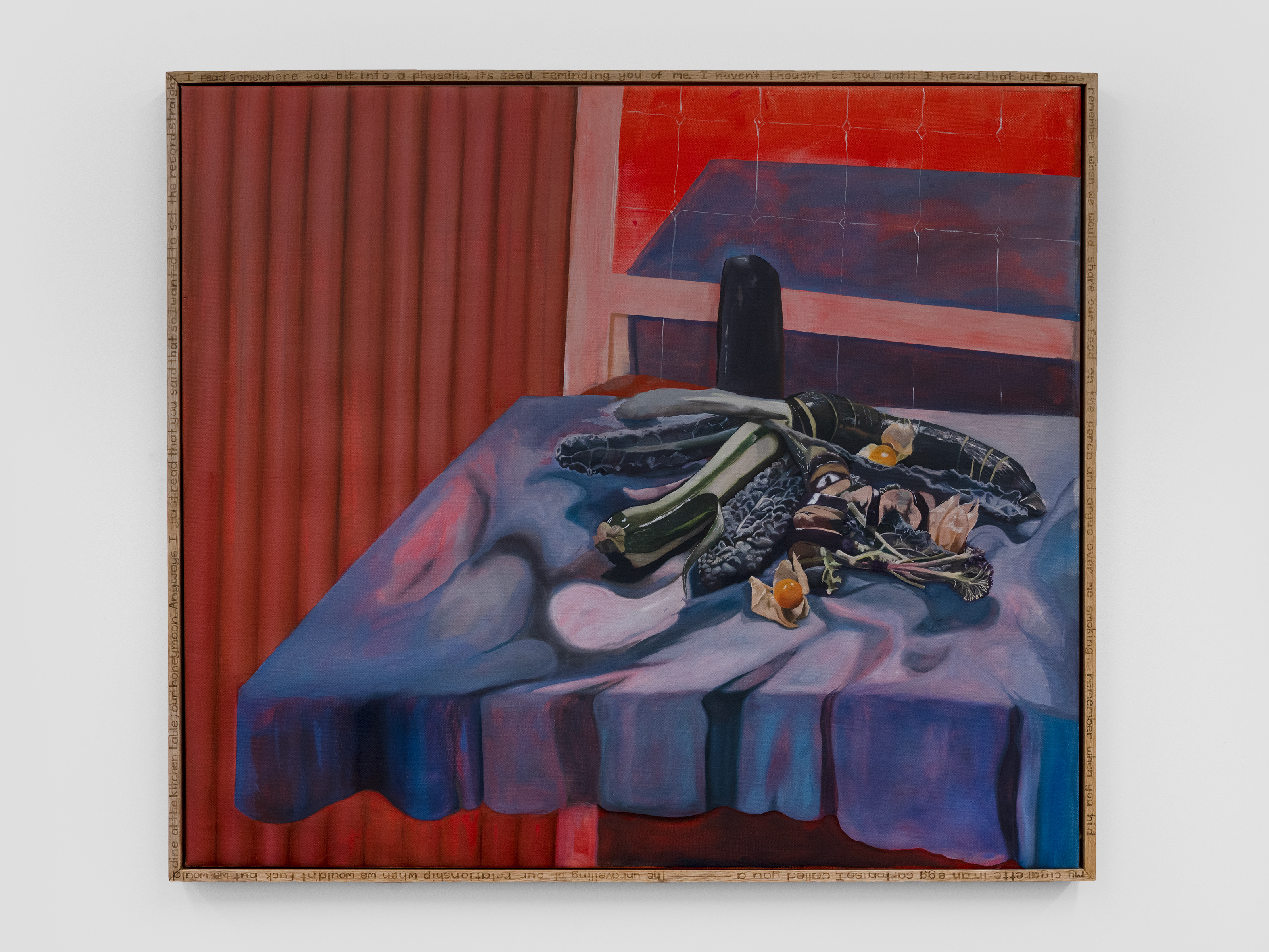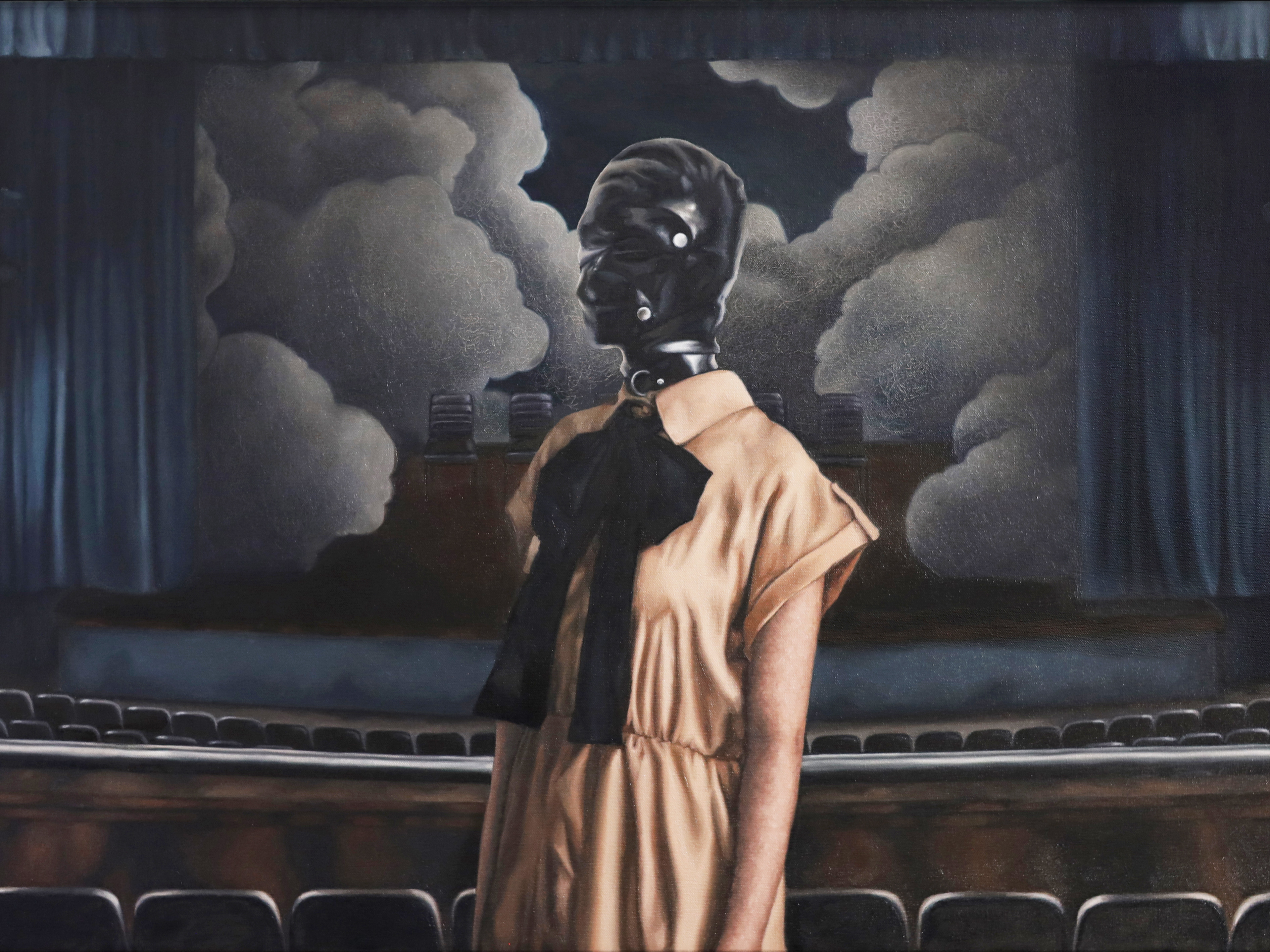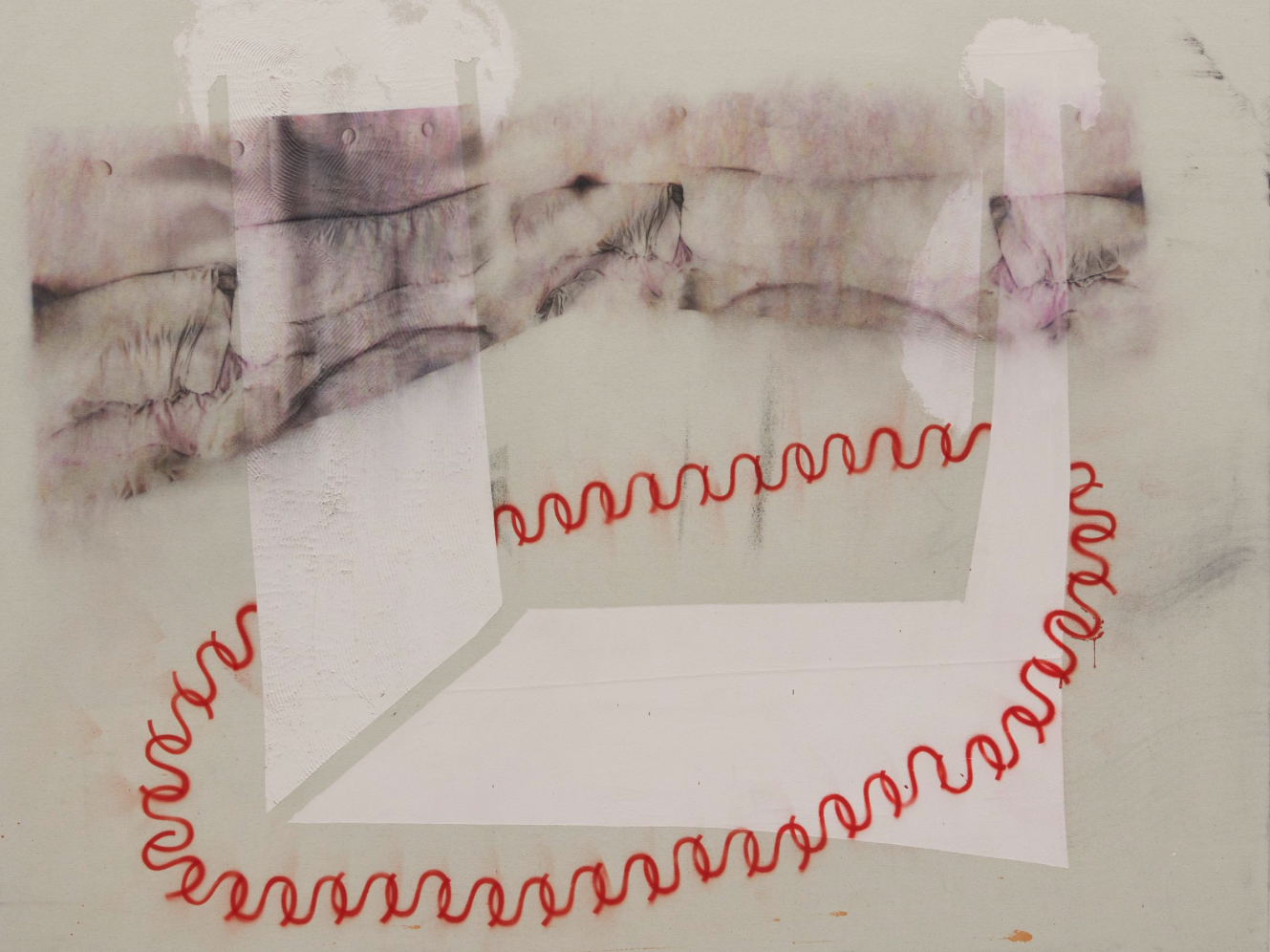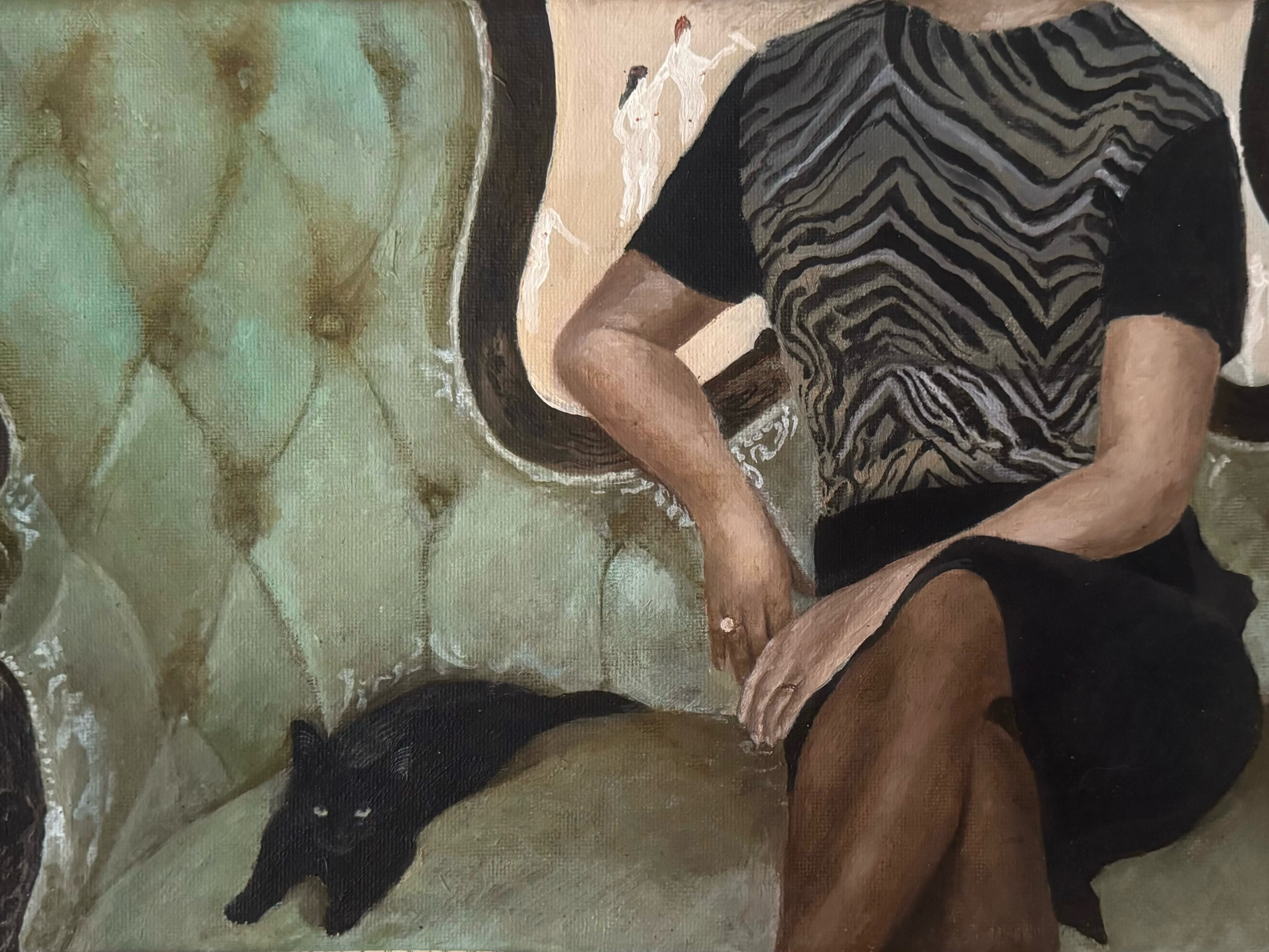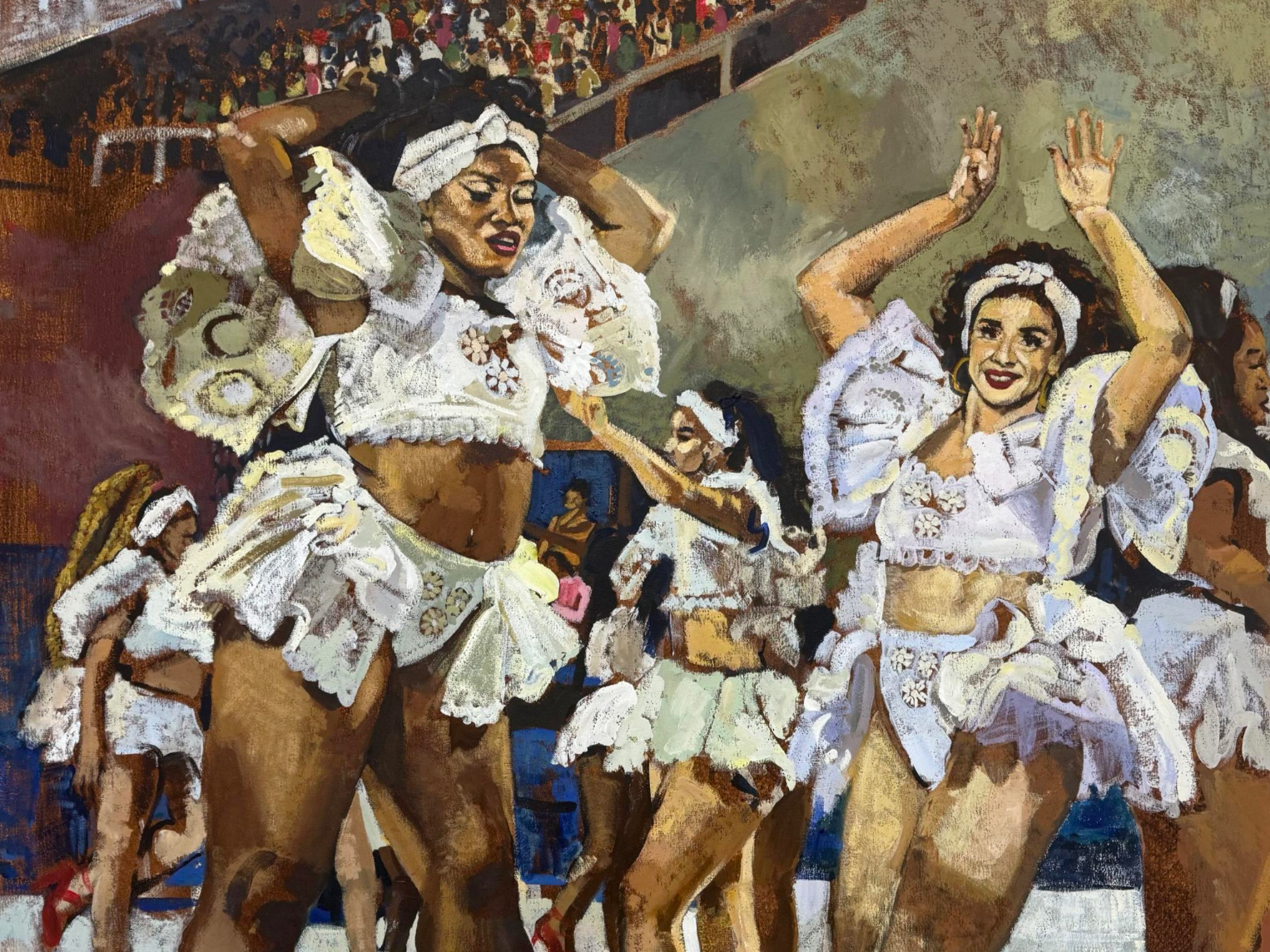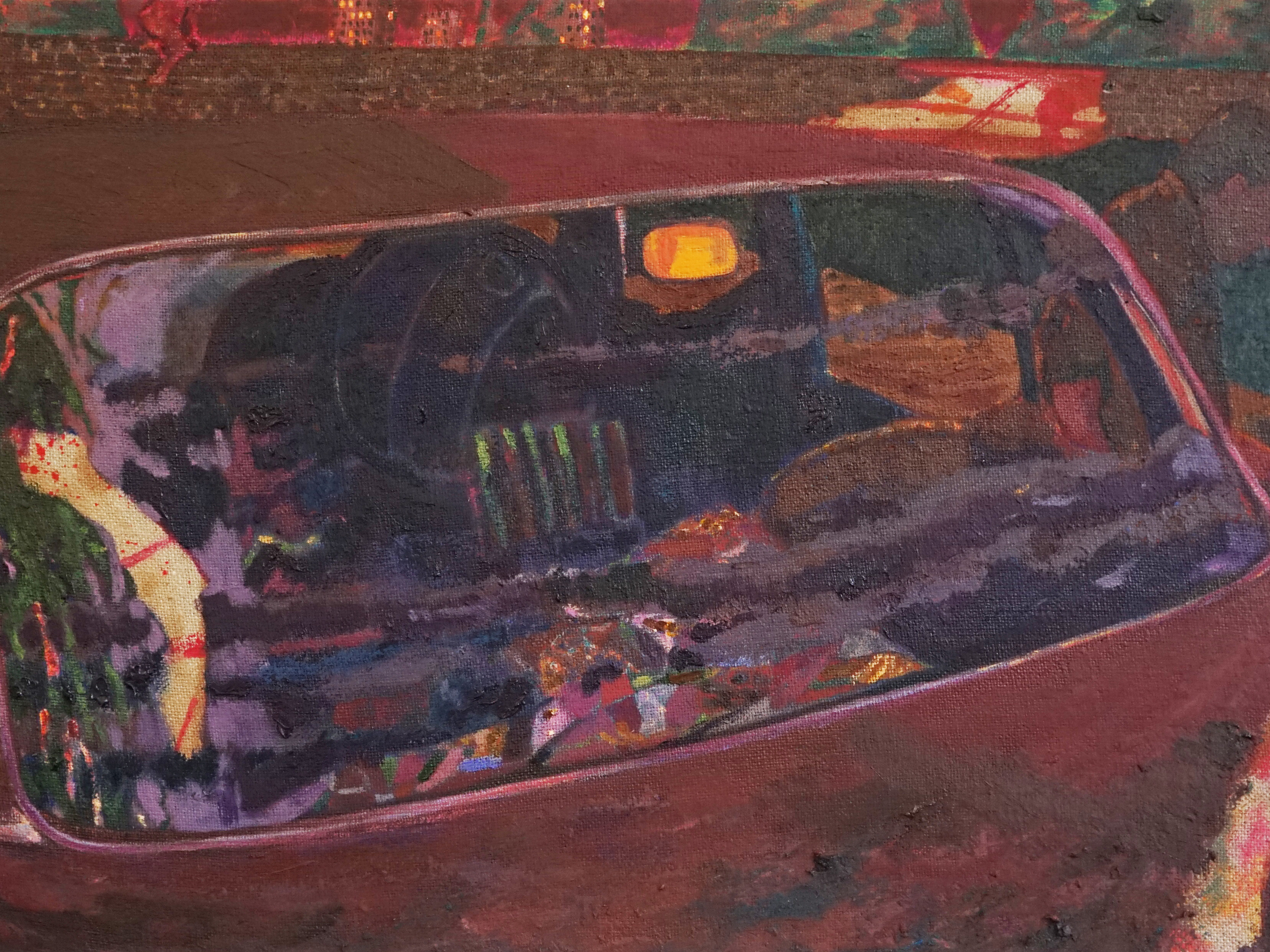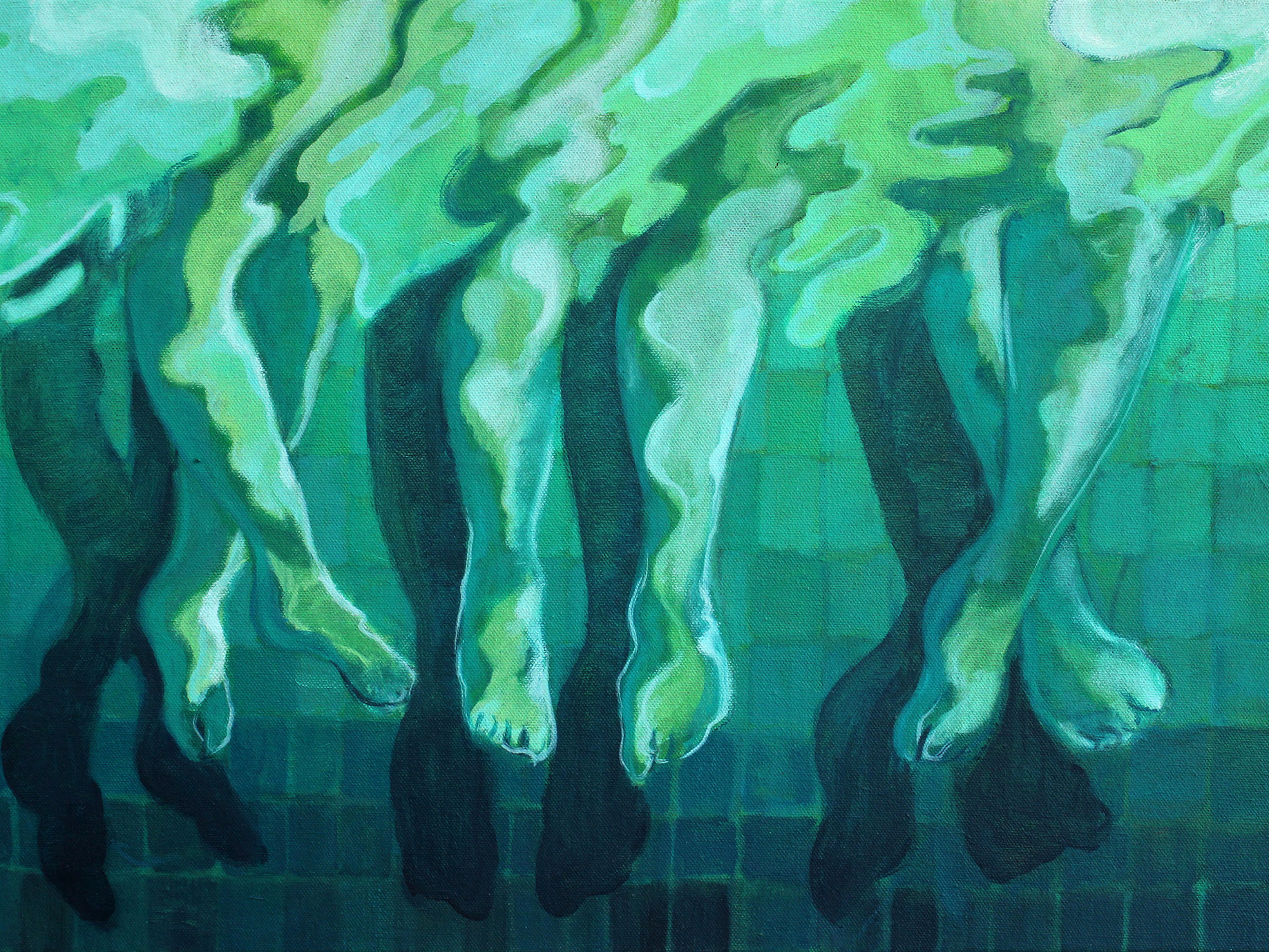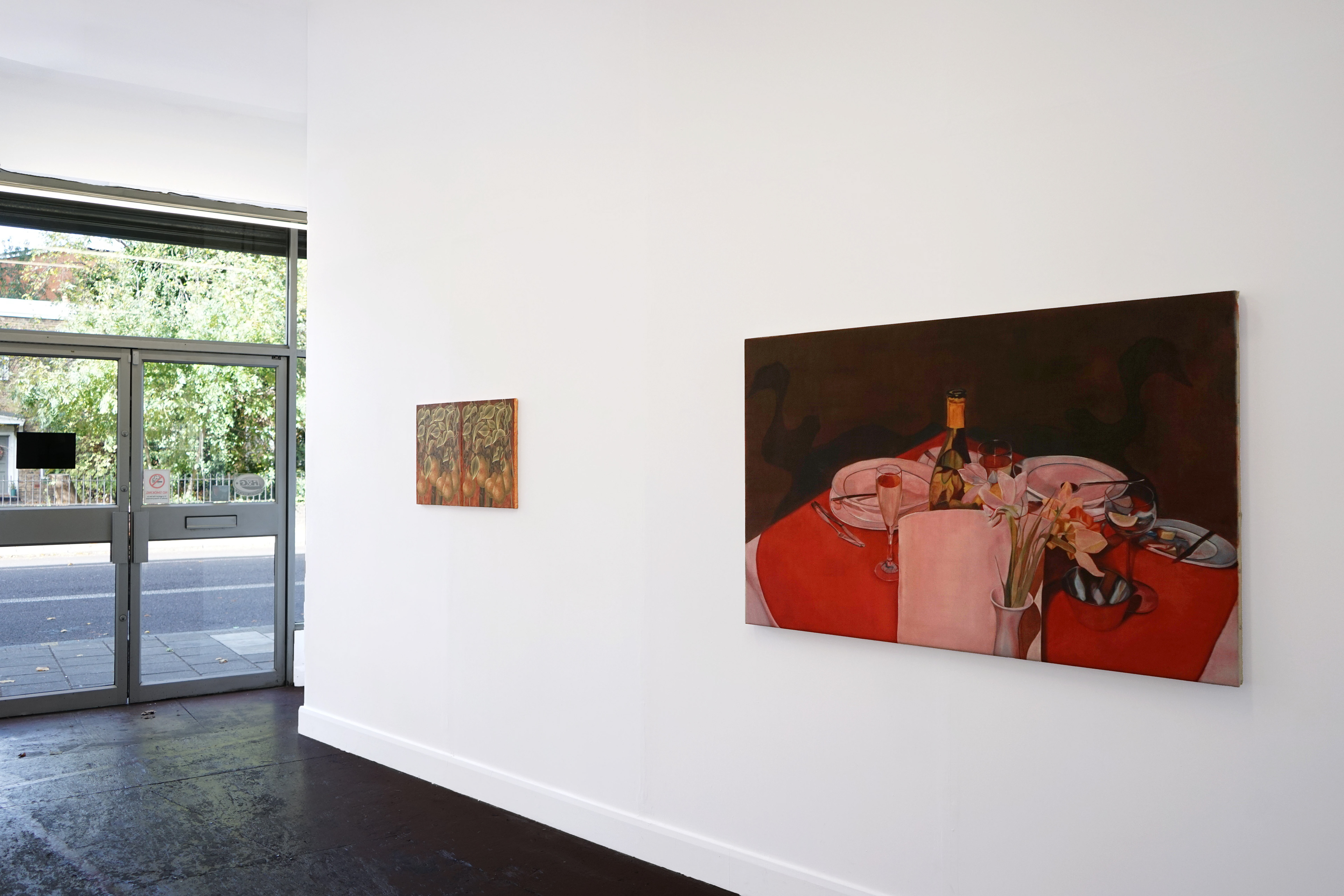
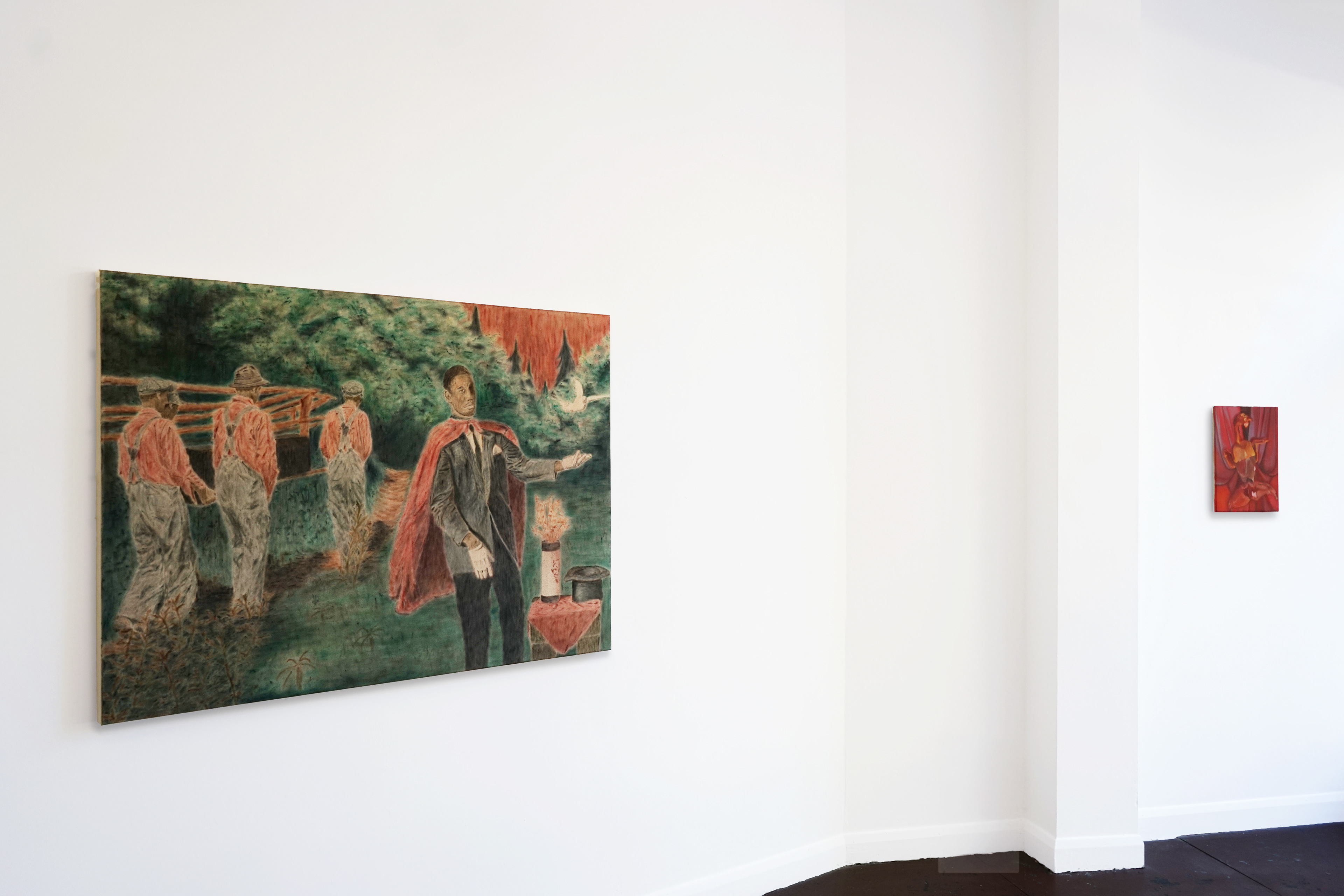
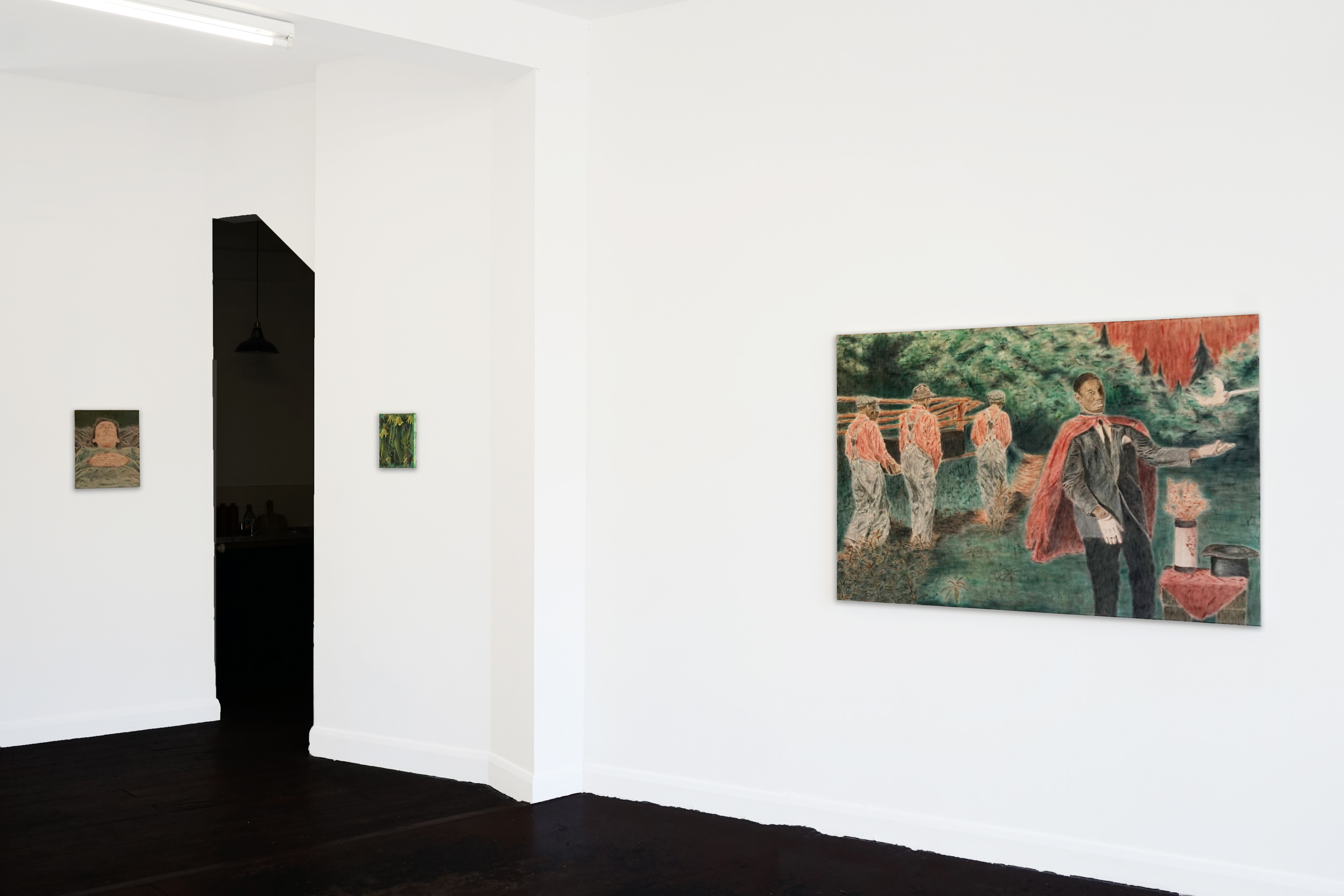
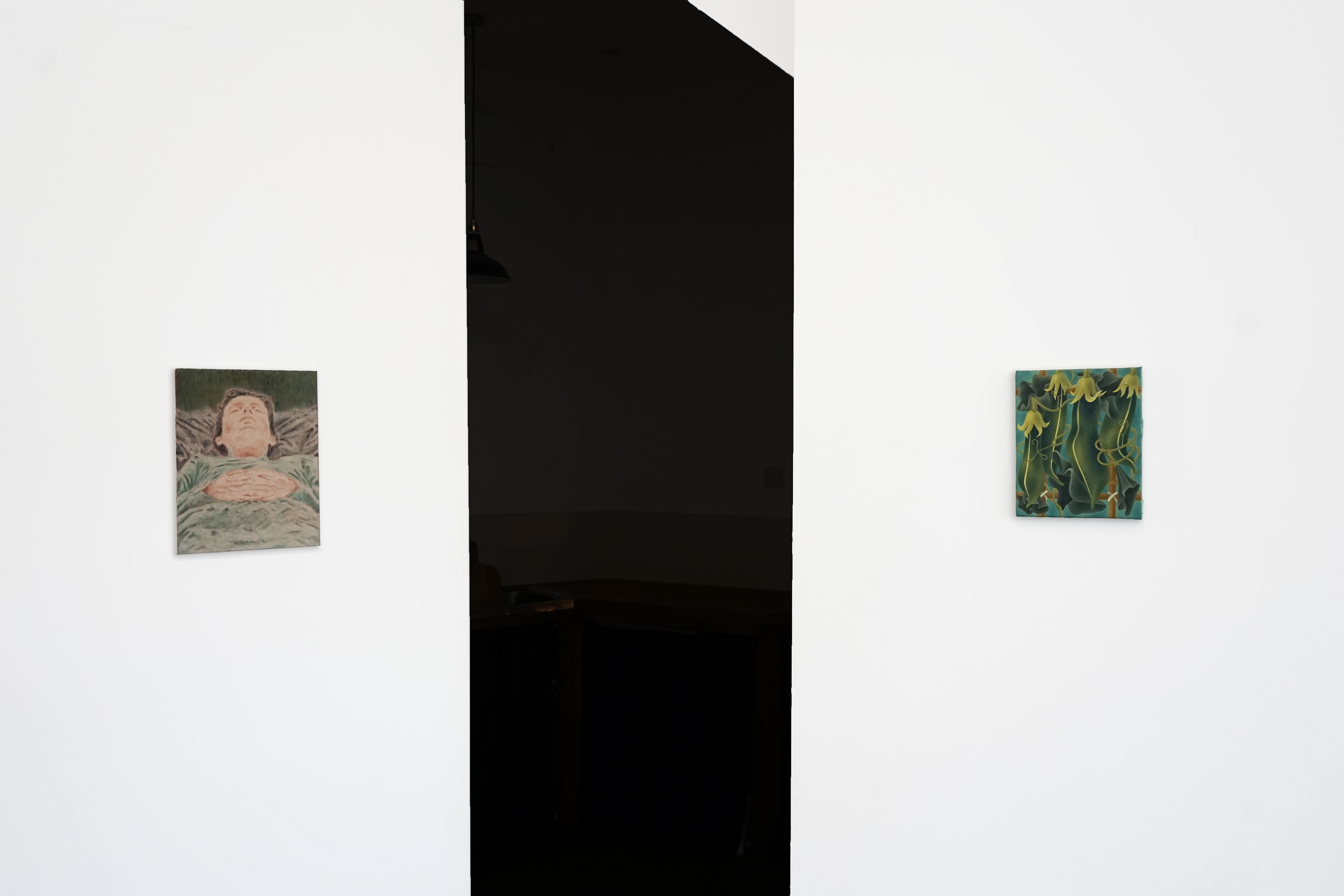
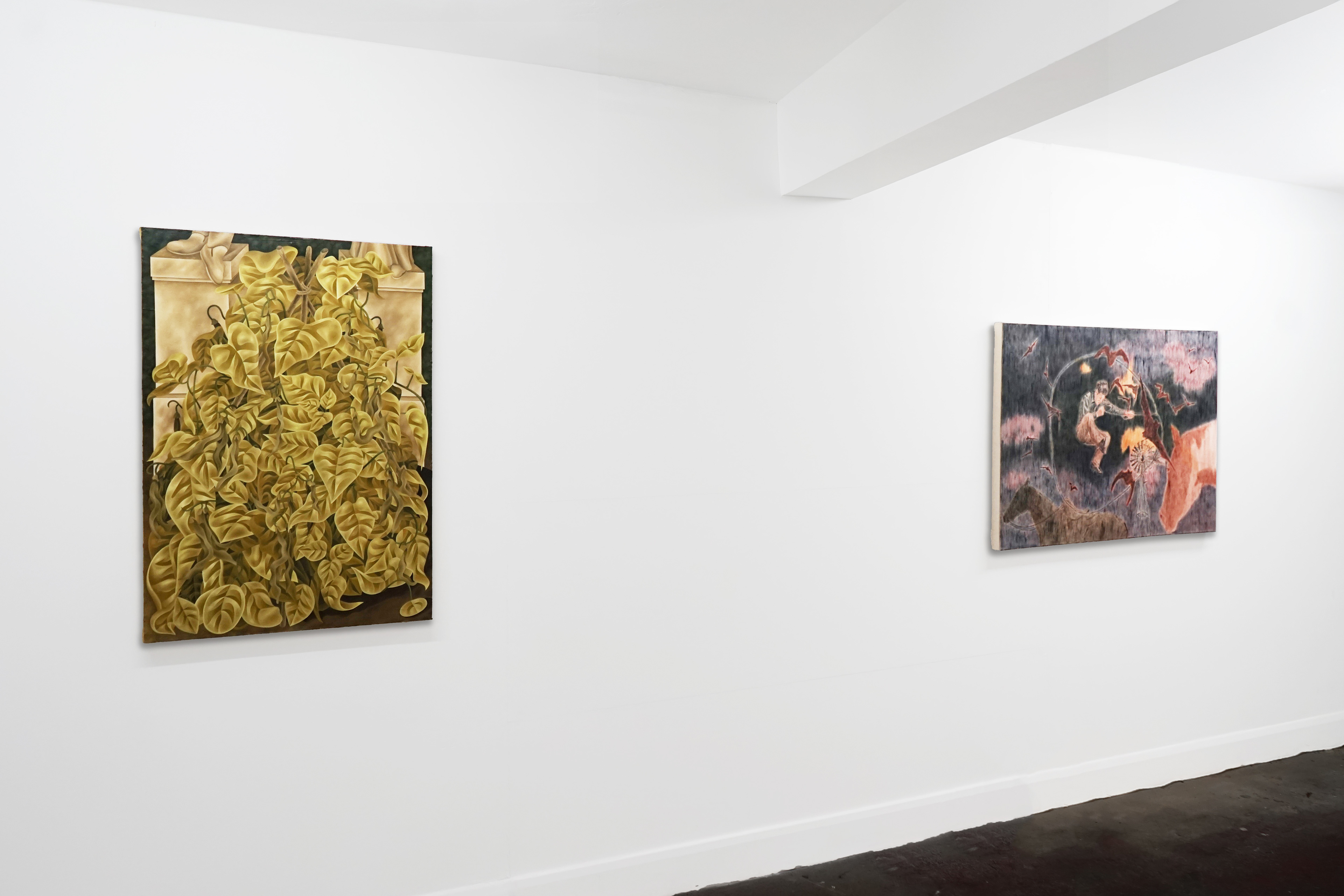
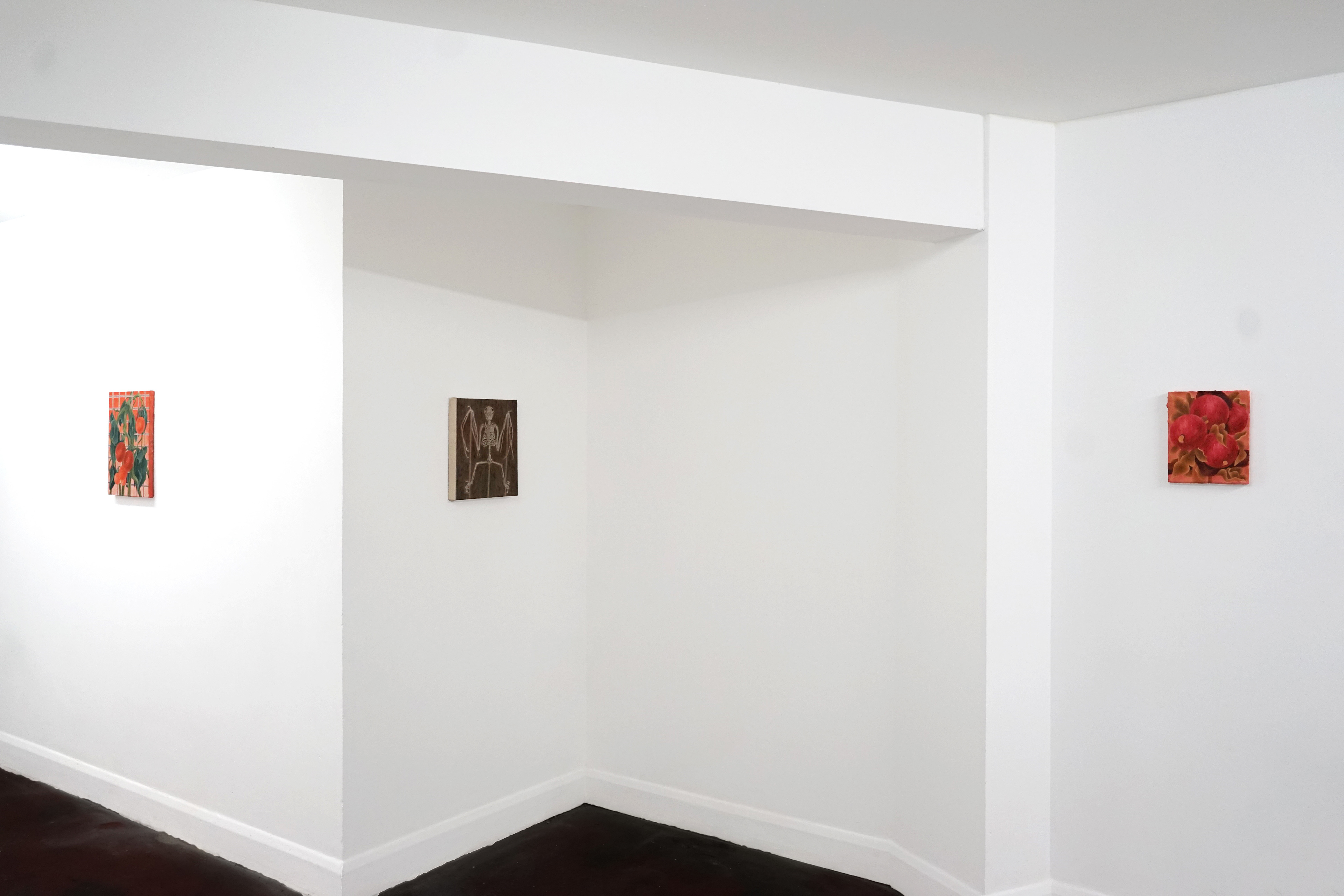
Twilight Contemporary is excited to present Magic, Allotments and Cockentryce, a trio exhibition by Clara Frain-Atallah, Lily Hargreaves, and Jonathan Tignor.
Hargreaves’ series of works responds to the ways in which we relate to and represent nature during times of unrest. Her research has drawn her to the infamous Galapagos Affair, which began in 1929 when a couple fled post-war Germany for an uninhabited island on the other side of the world in an attempt to establish their own Eden. Their escapades quickly garnered international press attention, and others followed, moving to the island. Soon, the inability to grow vegetation in the unusual, wild terrain became apparent. Thus, violent territorialism and power struggles broke out, leading to several mysterious disappearances and deaths. The new community became an intensified microcosm of the society they had all been trying to escape back home in Germany. For Hargreaves, this episode epitomises a wider, entitled belief - particularly striking in the context of a collapsing empire - that humans can dominate and control the natural world.
Hargreaves’ interest in the subjugation of plants is not limited to the pruning or propagation found out in the wild. Her work also reflects on the restrictive qualities of paint itself, where compositions feel like narratives that have been engineered and physically assembled. The works question whether paint can depict nature in its truly wild, gloriously free state. Instead, they are persuasive in suggesting that to paint the natural world is another act of anthropocentrism - a framing of nature through the human lens. In times of war and unrest, paintings of nature have often appeared emblematic of the machine, or of isolation, thus making the need to escape into the wild ever more prescient.
Frain-Atallah turns to the Cockentryce, a dish dating from the Middle Ages in which a suckling pig’s upper body was sewn onto the bottom half of a capon, or alternatively, the poultry’s front end stitched to the piglet’s rump. This grotesque stitch, performed to impress the wealthy, was a theatrical attempt to replicate a mythical creature that never truly existed. Frain-Atallah, like Hargreaves, is drawn to the power of painting to frame and reframe- to restage events and reveal recurring patterns and symbols that float beneath the surface of perception. Within the large Tablescape image, the shadows of the Cockentryce invite the viewer to consider what lies beyond the frame, and how these paintings exist within the same world as their subjects.
Tignor’s works centre on the idea of the magician as performer. Christopher Nolan’s film The Prestige describes a magic trick as having three steps: the Pledge, the Turn, and the Prestige. Tignor became interested in the way painting functions similarly to magic. The way a painting might present something familiar, twist it through the medium, and give the viewer a new experience of the known. Unlike fantasy-genre wizards whose magic is ‘real,; within the magician’s act it is all illusion. But this doesn’t mean the feelings evoked aren’t real. There is a suspension of disbelief allowing for anticipation and surprise. How do paintings, or images, create a ‘real’ experience out of artifice?
Seneca the Younger of Rome, a Stoic philosopher of Ancient Rome, comments on taking pleasure in the mystery of a simple cup-and-dice trick: “Such quibbles are just as harmlessly deceptive as the juggler’s cup and dice, in which it is the very trickery that pleases me. But show me how the trick is done, and I have lost my interest therein.” In not knowing, we make room for miracles - it is the not knowing that allows for the belief. Do we need to ‘know’ a painting to believe it - to experience it?
Whether through the domestication of the natural world, the reanimation of medieval spectacle, or the sleight of hand inherent in image-making, each artist questions the boundaries between truth and artifice. In doing so, their works reflect on the enduring tension between control and wonder, reminding us that the act of looking, like magic itself, depends on the delicate balance between revelation and mystery.
Curation by Sam Hanson
The Horizon (the thing you can never lasso),
Jonathan Tignor,
Oil on Canvas, 2025, 80 x 115 cm
Price on request
I Could Be Cold And Strong And I Will Be Cold And Strong,
Lily Hargreaves,
Oil on Canvas, 2025, Diptych, 45 x 70 cm
Price on request
Not where the blade enters, but where it twists,
Jonathan Tignor,
Oil on Canvas, 2025, 95 x 115 cm
Price on request
cockatrice posted to reddit,
Clara Frain-Atallah,
Oil on Canvas, 2025
93 x 62 cm (Framed), 48 x 71.5cm (Unframed)
Price on request
Cockentrice,
Clara Frain-Atallah,
Oil on Canvas, 2025,
70 x 51 cm (Framed), 46 x 60 cm (Unframed)
Price on request
EXHIBITING ARTISTS:
JOIN OUR MAILING LIST:
Thank you!
Copyright 2025 © Twilight Contemporary Ltd.
